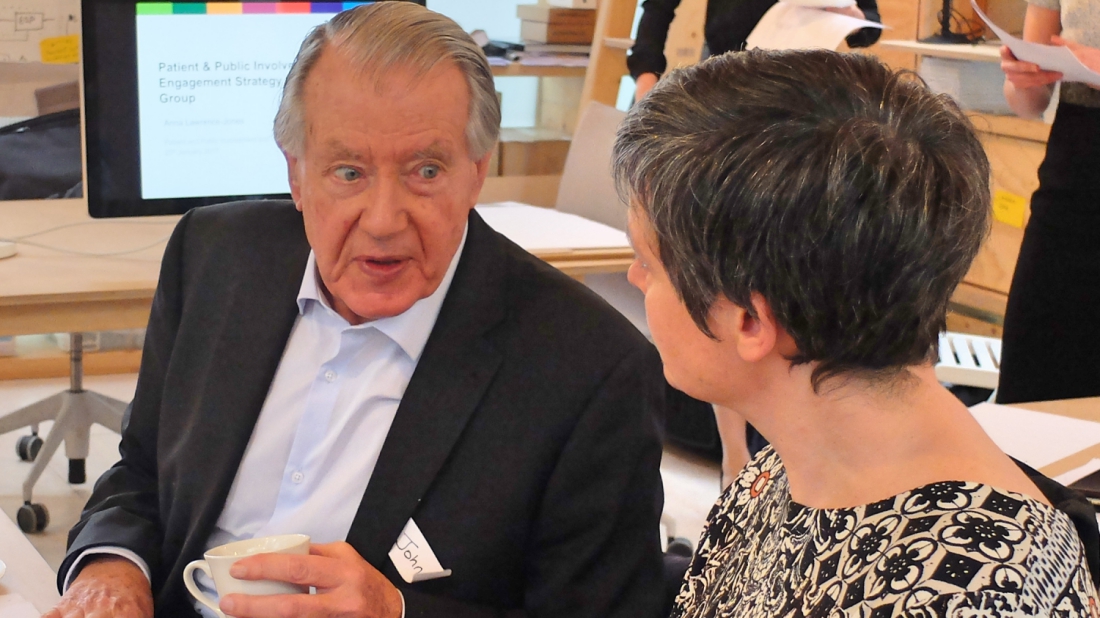 By John Norton
By John Norton
I am delighted to have been appointed one of the first 11 patient, carer and public members (lay partners) of the new Research Partners Group (RPG) of the Patient Safety Translational Research Centre (PSTRC).
What a mouthful of terms! But, essentially, the RPG is one of the new structures the PSTRC have put in place to help ensure appropriate involvement of patients, carers, and members of the public across its research projects. The RPG will be the first point of call for researchers and will scrutinise the patient and public involvement plans in research projects and act as a link to other lay partners. The “P” is very important, as I strongly believe that patients and the public should be equal “partners” in research and care.
How have I got here? Without any previous experience of healthcare except as a patient but with a background of volunteering in caring activities, I was invited four years ago to become a lay partner in an advisory group in North West London (NWL). The group had a co-productive role with a diverse group of professionals, to research and deliver an integrated care toolkit. “Integrated care” or “joined up care” is a package of care provided for those whose health and social care needs span more than one organisation (e.g. GP surgery, hospital, mental health services and a care home). This comprehensive toolkit shows how the vision of integrated health and social care can be carried into practice in a way that more fully reflects the needs of patients, carers and the public. We must have done something right because, much to our surprise and delight, we won the 2015 London Leadership Academy Patient Champion of the Year Award!
Since then I have been working on many groups in NWL to carry that vision into effect and I also became a Patient Safety Champion in a network set up by Imperial College Health Partners. This led to me being asked to join the Safety Culture Reference Group set up recently by Imperial College Healthcare NHS Trust.
Following the PSTRC’s inspiring Patient and Public Involvement and Engagement (PPIE) Strategy working group at the Helix Centre in January, I was asked to become one of three interim Patient and Public Representatives on the PPIE Advisory Board. The professionals on the PPIE Board are enormously well qualified as researchers, clinicians, and PPIE experts, so it is a great privilege to be working so closely with them. This Board will guide and oversee the implementation and further development of the PPIE strategy.
The PPIE Board first met in May. As I have a professional background in law, merchant banking and, in recent years, trusteeships of pension schemes, I don’t find it difficult to work co-productively with health professionals. I am, nevertheless, impressed that highly qualified health professionals are so willing to listen and take note of lay partners. I am not there, in any way, to question their expertise but, in the spirit of a critical friend, to contribute a viewpoint from the needs and desired outcomes of those to whom that expertise is dedicated.
As Lord Darzi aptly puts it, we are faced with a ‘double shot of complexity: increasingly complex care and increasingly complex patient needs’. He sees that this complexity can be met by ‘focusing on urgent research gaps; by working with our partners’ including ‘most importantly, by working closely with patients, carers and members of the public’. That is what we are about.
The RPG will be set up in phases. Phase one members all have experience of PPIE in research and will be based in London. The members, some of whom I have met in my lay partner work, come from a range of experiences, for instance, with PSTRC, the NWL Collaboration for Leadership in Applied Health Research and Care (CLAHRC) and with other Imperial organisations, as I do. Some are new to Imperial and patient safety research. We will all get the necessary training and support to be an effective group. Expanding the RPG to members who are not necessarily local or have experience of PPIE in research will be phase two in 2018.
The process to establish the RPG took time and thought. We built on learnings from other groups and co-designed the process to ensure it was transparent and was not too off-putting. We all completed an online application form, were shortlisted by PPIE Board members and then attended a short face-to-face interview. This was conducted most professionally and was enjoyable. I was seen by the PSTRC’s PPIE Manager, Anna Lawrence-Jones and Sandra Jayacodi, an interim Patient and Public Representative of the PPIE Board.
The questions asked about my experience that matched the role profile and my enthusiasm. I believe I got across my passion for being involved and improving research to make care safer. When we expand the RPG, the process may look different. If you are interested in being involved with the PSTRC please email Anna Lawrence-Jones.
Now we get down to work. I am looking forward to getting to know those members of the group with whom I have not worked before. Also, I am keen to learn about the research at the PSTRC and how the RPG can most effectively improve PPIE in these projects. We will, as a full group, have our first training day in October. As advised by other groups, the training day will be about getting to know each other and the skills in the room. The training will be shaped by a mock RPG meeting with feedback, to help ensure the meetings are run in the most effective way.
The future for the RPG is exciting, as we scrutinise PPIE plans in research projects, co-design how to involve seldom heard groups and find the best way to expand and evolve the RPG to make it as inclusive, representative and successful as possible. I can’t wait for the work to begin.